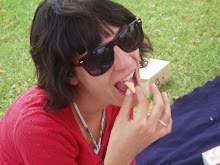Its national cricket team may have had a win over England in the third test match this weekend, but Pakistan has been struggling terribly for the last few weeks. About 14 million people have been affected by the severe flooding; more than 1600 people have died; an estimated 300,000 homes have been swept away; and the other day I heard an area the size of Lebanon was completely under water. There are no words to describe the tragedy, but I'm trying to do good through eating.
Hundreds of thousands of people are without food and shelter, so this week I'm trying to use my Pakistani meal to help the UNHCR reach their $500,000 target. Please help me and donate even the teeniest bit you can for those left disadvantaged by this natural disaster.
I think I knew, but I'd forgotten how young Pakistan is. It gained independence from British India 63 years ago, so much of its food has been majorly influenced by its neighbours - mainly India and Afghanistan. The dish I cooked - chicken biryani - actually hails from Persia, and is said to have been brought to the region via Afghanistan and through to North India. The word biryani is Farsi for "fried before cooking" and refers to the way the rice is fried off in spices before being cooked with the chicken, lamb, beef or mutton you've been simmering.
Unlike some other styles of biryani - there are more than a dozen across many different countries - Pakistani biryani uses chicken as its main meat (especially in Karachi: the largest city in Pakistan, home to about 18 million people) and includes potatoes, too, so it's quite filling.
With 25 ingredients and more than 10 different spices, it's quite amazing how subtle the spice flavours actually were once we got stuck into the dish. You can distinctly taste a few of the spices, especially cardamom and cinnamon, but surprisingly because the spice paste cooked down quite a bit, perhaps only Matt Preston swirling it all around in his mouth, with eyes closed of course, would detect that there's actually yoghurt, tomato and fresh mint in there, too. But that's not a negative. It was complex, but all the flavours worked really beautifully together - even the rose water that was added to the rice mixture. It gave a lovely hint of sweetness, as did the fried sultanas that were added on top.
I read somewhere that to tell if you've made a good biryani you have to throw a handful of it on the floor - how outrageous to waste such a delicious bit of food - to see that no two rice grains stick together. While I didn't go to those lengths to test the success of my biryani, it was pretty easy to tell the grains were well separated right there in the bowl.
If you want to sample a few different Pakistani delights before making it at home, I've heard Faheem's in Sydney makes the best home-style Pakistani food you'll find in the city, so head to 194-196 Enmore Road, Enmore, but do try the biryani at home.
Subscribe to:
Post Comments (Atom)





No comments:
Post a Comment